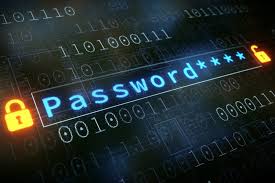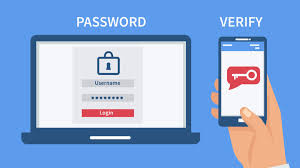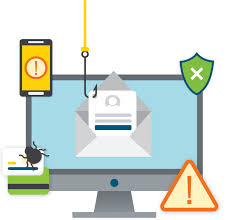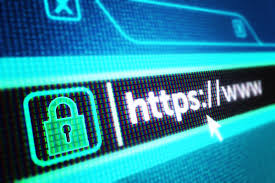
Affiliate Disclosure
Note: This banner contains an affiliate link. If you click and make a purchase, we may earn a commission at no extra cost to you. This helps us maintain and improve our content for users like you, supporting our travel site operations.
In today’s interconnected world, cybersecurity is more important than ever. While antivirus software is a crucial component of online protection, it is only one piece of the puzzle. To fully safeguard your personal information, data, and devices, adopting a range of best practices beyond antivirus software is essential. These practices encompass secure browsing habits, strong password management, awareness of phishing and scams, and the use of encryption tools. This article will guide you through the best practices for staying safe online and protecting yourself from cyber threats.
1. Use Strong, Unique Passwords

One of the simplest and most effective ways to protect your online accounts is by using strong and unique passwords. A strong password typically consists of at least 12 characters, combining uppercase and lowercase letters, numbers, and special symbols. Avoid using easily guessable information such as names, birthdates, or common words.
It’s also crucial to use different passwords for each of your online accounts. Reusing passwords across multiple sites increases the risk of a breach if one of your accounts is compromised. A password manager can help you store and generate complex passwords, making it easier to maintain secure login credentials for all your accounts.
2. Enable Two-Factor Authentication (2FA)

Two-factor authentication (2FA) adds an extra layer of security to your online accounts by requiring two forms of identification before granting access. In addition to entering your password, 2FA typically involves receiving a one-time code sent via text message, email, or an authentication app. This means that even if a cybercriminal manages to obtain your password, they will not be able to access your account without the second factor.
Many online services, including email providers, social media platforms, and banking sites, offer 2FA as an added security measure. Enabling 2FA is a simple and effective way to enhance your online security and prevent unauthorized access to your accounts.
3. Be Cautious of Phishing and Scams

Phishing is one of the most common methods cybercriminals use to steal personal information and credentials. Phishing emails, texts, and websites often appear legitimate, tricking users into providing sensitive data such as usernames, passwords, or credit card details. These attacks can take many forms, including fake bank alerts, fraudulent e-commerce sites, or malicious attachments.
To avoid falling victim to phishing attempts, always verify the sender’s email address or phone number before responding to any communication. Be skeptical of unsolicited requests for personal information or urgent action. Additionally, avoid clicking on links or downloading attachments from unknown sources. If in doubt, contact the company or person directly through official channels to verify the request.
4. Update Software Regularly

Keeping your operating system, applications, and software up to date is one of the most important steps in securing your devices. Software updates often include patches for known vulnerabilities, and delaying or ignoring them leaves your system exposed to cyberattacks. Cybercriminals actively look for unpatched vulnerabilities to exploit, making regular updates a vital part of your defense strategy.
Many programs allow you to set automatic updates, ensuring that your system is always running the latest, most secure version. Make sure to update your antivirus software as well, as newer versions often include improved detection methods for emerging threats.
5. Browse Securely

When browsing the internet, it’s essential to be mindful of the websites you visit and how you interact with online content. Always check for a secure connection by looking for the padlock icon and “https://” in the website’s URL. This indicates that the site uses encryption to protect your data during transmission.
Avoid using public Wi-Fi networks for sensitive activities, such as banking or shopping. Public Wi-Fi is often unsecured, making it easier for cybercriminals to intercept your data. If you must use a public network, consider using a Virtual Private Network (VPN) to encrypt your internet connection and protect your online privacy.
6. Be Careful with Social Media Sharing
Social media platforms are a goldmine for cybercriminals looking to gather personal information. Posting too much personal information online can make you vulnerable to identity theft, phishing, and other forms of attack. Avoid sharing sensitive details such as your home address, phone number, or vacation plans on social media.
Additionally, be cautious about accepting friend requests or connections from people you don’t know. Cybercriminals often create fake profiles to build trust and gain access to your personal information. Regularly review your privacy settings on social media platforms to control who can see your posts and personal details.
7. Backup Your Data Regularly
One of the best ways to protect your data from ransomware and other types of attacks is to back it up regularly. Ransomware attacks can lock you out of your own files, demanding payment for their release. By having a recent backup of your important documents, photos, and files, you can restore your data without paying the ransom.
There are several ways to back up your data, including using cloud storage services or external hard drives. Cloud-based solutions often provide automatic backups, ensuring that your data is always protected without requiring manual intervention. Be sure to back up critical files at least once a week, or more frequently if you work with important documents daily.
8. Use Encryption for Sensitive Information

Encryption is a powerful tool for protecting your data, especially when sending sensitive information over the internet. Encryption scrambles data so that it can only be read by someone with the correct decryption key. Many messaging services, email providers, and file-sharing platforms now offer end-to-end encryption, which ensures that only you and the intended recipient can access the content of your messages or files.
If you work with sensitive data, such as personal information or financial records, consider using encryption software to protect your files before sharing them online. Many operating systems also offer built-in encryption tools, such as BitLocker for Windows or FileVault for macOS, which can encrypt entire drives for added security.
9. Avoid Downloading Untrusted Files and Software
Downloading files from untrusted sources is a common way for malware and viruses to infect your computer. Always download software, apps, and files from official, trusted sources, such as the developer’s website or reputable app stores. Avoid downloading cracked software, as it often contains hidden malware or other malicious code.
Be cautious when downloading files via email or from file-sharing sites. If the file seems suspicious or comes from an unknown sender, it’s best to avoid opening or downloading it. Use antivirus software to scan downloaded files before opening them to detect potential threats.
10. Use Firewalls for Added Protection
A firewall acts as a barrier between your computer and the internet, monitoring incoming and outgoing traffic and blocking potentially harmful connections. Most operating systems come with a built-in firewall that should be enabled at all times. Firewalls help prevent unauthorized access to your system and can block malicious traffic, such as that generated by malware or hackers attempting to exploit vulnerabilities.
For an extra layer of protection, consider using a third-party firewall solution. These programs often offer additional features, such as real-time monitoring, custom security rules, and alerts for suspicious activity.
Conclusion
While antivirus software is an essential part of your cybersecurity toolkit, it should not be relied upon as your only defense. By following these best practices for staying safe online, you can significantly reduce your risk of falling victim to cyberattacks, scams, and data breaches. Use strong passwords, enable two-factor authentication, and remain vigilant about phishing attempts. Regularly update your software, back up your data, and browse securely to create a multi-layered defense against online threats. By combining these practices with your antivirus software, you can ensure a safer online experience for yourself and your family.

